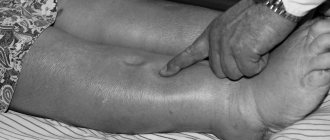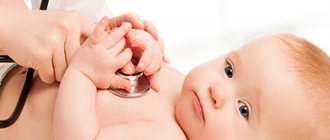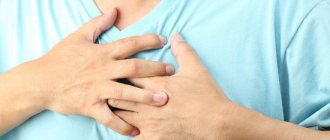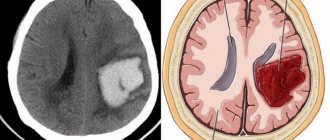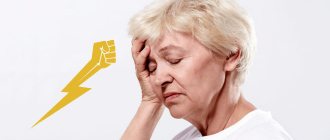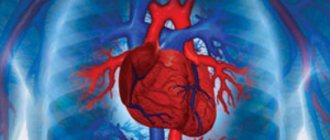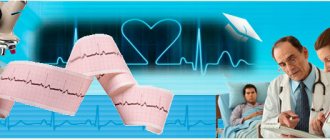Heart disease is one of the most common heart health problems among adults. Problems with the heart and blood vessels can arise as independent diseases, or be consequences and complications of other pathological conditions.
Like most serious diseases, heart disease can be prevented or stopped at an early stage if you consult a doctor when the first symptoms of illness occur. Most often, the first sign of a problem is pain.
Pain in the chest does not always mean exclusively a cardiac problem, which is why it will be useful for every person to know about the characteristics of pain associated with cardiac ailment.
How to distinguish one pain from another
In addition to cardiac ailment, anxiety sensations may occur in the sternum area caused by disorders of the following systems:
- nervous;
- digestive tract;
- respiratory;
- musculoskeletal system and spine.
Some signs characteristic of heart disease will help to distinguish pain from heart disease:
- The pain does not go away quickly and lasts a long time, more than 30 minutes.
- Often occur at rest, during sleep.
- The pain calms down after taking nitroglycerin.
- The sensations are accompanied by additional symptoms - a feeling of panic, unreasonable fear, lack of air, dizziness, a state close to fainting.
- Occurs after physical and emotional stress.
- The rhythm of the heart changes - disturbed, uneven or accelerated.
- The skin turns pale and acquires a bluish tint.
- Sweating profusely.
- Feels very weak.
Arthralgia
Another unrelated, in the opinion of most people, symptom of a malfunction of the heart is pain in the elbow or wrist, sometimes spreading to the entire arm. It is alarming if such a sign appears when a person exceeds his usual load, for example, when climbing quickly up the stairs. Of course, if there was some kind of injury before this, arthralgia may well arise against this background. However, recurrence of the unpleasant sensation on the left side and after physical activity requires consultation with a specialist and hardware examination of ECG, ECHO CG, CM.
Features of cardiac pain in women
There are additional symptoms that are common in women and quite rare in men:
- respiratory rhythm disturbances;
- abdominal pain, nausea, vomiting;
- swelling of the legs;
- frequent urge to urinate.
In general, pain in the heart area does not differ between men and women. However, men tend to delay seeing a doctor, hoping for symptoms to disappear on their own.
During this time, the pain can become more intense and significantly worsen the man’s well-being. Along with the intensification of symptoms, pathological changes in the tissues of the organ increase their area. Therefore, according to statistics, men see a doctor with severe pain and disorders that require treatment.
There are statistics that show a higher incidence of heart disease in men compared to women. This trend may be explained by differences in hormonal regulation.
So in women who have higher levels of estrogen in the blood compared to their husbands, heart disease occurs less frequently. With the onset of menopause, hormone levels decrease and women are also at risk for heart disease.
Advice: older men and women should think about preventing the occurrence of cardiac and vascular diseases.
Signs of a heart attack and first aid
Coronary heart disease is one of the most common cardiac pathologies diagnosed in men. It is dangerous because it causes irreversible changes in the heart muscle. Over time, this leads to a heart attack - acute damage to the myocardium, which is accompanied by necrosis of its area and loss of the ability to contract. A heart attack occurs with the development of the following symptoms:
- Sharp and severe pressing pain behind the sternum, which radiates to the neck, back or arm.
- Weakness and dizziness. A heart attack may be accompanied by severe headaches and loss of consciousness.
- Panic. Many patients experience extreme fear during a heart attack.
- No effect when taking Nitroglycerin. This drug is used for many cardiac problems, but in case of a heart attack its effect is minimal.
Most often, this state lasts about 15–20 minutes. In some cases, a heart attack is asymptomatic, but this is rare.
If such clinical signs appear, you should immediately call an ambulance. Before her arrival, the patient should be given first aid:
- Try to calm the person down, since a heart attack is associated with a feeling of fear. In especially severe cases, you can take a sedative.
- There are various recommendations regarding the choice of body position that could alleviate the condition. It all depends on the specific case, but the main thing is that the patient is comfortable.
- Ensuring a flow of fresh air. Many people find it difficult to breathe during a heart attack, so it is important to ensure that the room is well ventilated.
- Taking Nitroglycerin somewhat alleviates the pain syndrome during a heart attack, but does not relieve it completely. The interval between taking the first tablet and the next two should be at least 15 minutes, even if there is no effect. Nitroglycerin should not be taken by people with low blood pressure.
Why is heart pain dangerous?
Pain is a signal that a problem has arisen in the functioning of any organ. Most often, the first painful sensations in the heart area are not very intense and pass quickly.
That is why the man decides that the cause of the pain was banal overwork or stress and continues to live his usual life, while the pathology continues to spread, increasingly disrupting the functioning of the organ.
Important: consulting a doctor at the first symptoms of heart disease will prevent the development of a serious disorder and save life.
The first painful sensations hide only the first cases of organ dysfunction. If the cause of the problem is indeed overexertion, then the person may never again encounter the problem of pain in the heart area. But as the pathological process develops, neglecting this alarming symptom will be very costly.
Ignoring chest pain can lead to a heart attack, heart failure, heart attack, disability, and death.
How to reduce risks?
Take another look at the risk factors we listed above. You can influence each of them. Stop smoking and alcohol, start eating right, exercising, maintaining a healthy weight and protecting yourself from stress.
If you are over 40 years old, do not forget to regularly visit your doctor, monitor your blood pressure, and take a blood test for cholesterol and glucose. Men whose close relatives are sick should be especially attentive to their health.
Heart diseases often manifest themselves as subtle symptoms, more likely to indicate autonomic disorders than serious pathologies. In men, signs of organic heart damage and vascular atherosclerosis are absent for a long time or are expressed in conditions in which it is quite difficult to suspect any abnormalities. But according to statistics, it is the stronger sex that most often becomes the victim of heart attacks that end in death. In most cases, this could have been avoided if the man had been promptly diagnosed and treated. That is why every person needs to have an idea of what direct and indirect signs may indicate disorders of the cardiovascular system.
What kind of pain can there be in the heart?
In men, pain in the heart area can occur due to various cardiac pathologies. Depending on the cause of the ailment, the nature of the pain will change.
Various types of heart pain and their causes:
| Nature of pain | Features of the manifestation of pain | Most common reasons |
| Aching | It is often difficult for a person to understand the source of this pain; it can be localized behind the sternum and cause pain in the back. Often the sensations radiate to the arm, or even pain and numbness occurs only in the limb | This pain is a consequence of neurological problems - neuralgia, osteochondrosis and other problems with the spinal column |
| Stabbing | Appears suddenly, the sensations are sharp, they cannot be tolerated, they can radiate to the surface of the back, neck and arm from the side of the heart | Such pain is a true cardiac symptom. Occurs during inflammatory processes in the tissues of the heart, with cardiac neurosis, spasms of the heart vessels. Also, such pain overtakes a person during the development of a heart attack, which has a serious consequence - a heart attack. |
| Pressing | The pain is not sharp, can last quite a long time, occurs after exercise, or on its own, often at night. The sensations also tend to spread to nearby parts of the body | These symptoms occur during the inflammatory process - myocarditis, with pathologies of the heart valve. The most common cause of this sensation is an attack of angina. |
| Burning | Lasts for some time, passes gradually, reducing its intensity. Sensations begin after physical or psychological stress | In some cases, an episode of angina begins with such sensations. However, most often they accompany a neurotic state, problems with the digestive system, pathologies of the digestive organs |
If you experience pain in the heart or chest, regardless of the nature of the sensations, you should take a comfortable position and try to relax. If the attack of pain has passed, it is worth making an appointment with a doctor and undergoing an examination, this will help prevent a recurrence of the attack and the development of complications.
If pain increases, a sharp deterioration in condition, or breathing problems, a person should urgently contact an ambulance.
Most people think that if there is pain in the heart area, it means it is sick. But, unfortunately, the patient does not always feel unwell or discomfort if there is any disease of the cardiovascular system.
In most cases, symptoms of heart disease in men do not appear for quite a long period of time. In this regard, a person learns about the diagnosis too late, when the disease is already in a severe stage of development.
Treatment
Treatment of heart failure is implemented in a complex manner. After identifying the cause that provoked the appearance of this condition in a man, drug therapy is prescribed. In addition to medications, various measures are prescribed to stabilize and improve the patient’s well-being. Such measures include:
- lack of psycho-emotional stress;
- salt-free diet (salt consumption should not exceed 2 g per day, and in some situations it is excluded altogether).
In the acute form, bed rest is indicated, which is subsequently canceled, and moderate physical activity, on the contrary, is recommended.
The best options are walking, low-intensity physical exercise at home, yoga, qigong - those types of activities that involve smooth execution, without jerking or significant effort.
The names and dosages of drugs used in the treatment of heart failure in men are prescribed individually in each situation. The following groups of drugs are used:
- anticoagulants;
- diuretics;
- cardiac glycosides;
- ACE inhibitors;
- β-blockers;
- nitrates;
- drugs to improve myocardial metabolism.
In some situations, not only drug therapy, but also surgery is used to solve the underlying problem.
Heart with heart failure
Signs of major CVD diseases
The quality of the heart and cardiovascular system has a direct impact on the functioning of the entire body. Different heart diseases have slightly different symptoms. For example:
- IHD. The first sign of cardiac ischemia is the development of angina, which is often confused with common gastric disorders. But if the sensation of pain radiates to the back or under the shoulder blade, it can be confirmed that there is an attack of angina pectoris. Coronary heart disease is also characterized by the manifestation of other signs (dizziness, weakness, shortness of breath, nausea, heart rate disturbance).
- Heart failure. As a rule, in patients the attack occurs instantly and lasts for 30–45 minutes. It is accompanied by symptoms such as increased blood pressure and ischemia. If the patient is not promptly provided with emergency care, there is a high probability of death.
- Arrhythmia. This disease may be asymptomatic, but, as a rule, it is accompanied by the following symptoms: rapid heartbeat, shortness of breath, pain in the chest, and fatigue.
- Atrial fibrillation. This disease is one of the most striking manifestations of arrhythmia. The symptoms are also similar to the previous ones, but there are some differences (a significant increase in the duration of the attack, a change in the rhythm of heart contraction, etc.).
- Heart valve diseases. This disease, according to statistics, tends to manifest itself either at an early age or in old age. In rare cases, it can develop in people whose life activities involve heavy physical exertion.
Symptoms of heart disease in men are a signal of the need to immediately consult a doctor.
It is much easier to prevent the development of a disease than to then fight it, and possibly its complications.
We must not forget that heart disease in men is the most common cause of death.
Main symptoms of acute heart failure
Signs of acute failure usually appear (90%) as a result of myocardial infarction (acute oxygen deficiency, ischemia of the heart muscle). They appear suddenly, quite quickly (within half an hour), alternately replacing each other.
Dyspnea
The most significant symptom for diagnosing acute heart failure. Lack of air occurs due to impaired conductivity and contractility of the heart muscle, which causes the amount of blood flowing to organs and tissues to sharply decrease. Impaired blood supply to the lungs leads to insufficient oxygenation of the blood, rapid breathing and increased heart rate.
Dyspnea in acute heart failure
Weakness
The condition is characterized by severe weakness, which is caused by circulatory disorders:
- legs give way;
- hard to stand;
- I want to sit down and lie down.
Chest pain
During an attack of acute heart failure, pain can be varied - from sharp, burning and unbearable to pulling, aching and stabbing. Often the pain echoes in the left arm, shoulder, under the shoulder blade, in the stomach area, in the jaw.
Drop in blood pressure
A decrease in the contractility of the heart muscle reduces the ejection volume and the amount of blood in the vascular system, as a result - a sharp drop in diastolic (lower, at the time of relaxation, >20 mm Hg) and systolic (upper, at the time of contraction, >90) pressure, which accompanied by characteristic external symptoms - lack of tension in large and small peripheral vessels (on the hands, feet).
Arrhythmia
A strong heartbeat is a kind of compensatory mechanism, a response to a lack of oxygen. By training the muscles to work, the body tries to satisfy the needs of tissues and organs and eliminate the consequences of ischemia. Arrhythmia in acute insufficiency is characterized by the so-called “gallop rhythm” (when listened to, it resembles the clatter of four hooves of a horse during a race).
Cough
The cough is initially unproductive, dry or with harsh wheezing. As pulmonary congestion and edema develop, it intensifies and is accompanied by the release of copious sputum, streaked with blood and pinkish in color.
Disorders of the blood supply to the brain
Symptoms arise as a consequence of a violation of the blood supply to the brain, develop and increase in the following order:
- dizziness;
- lethargy;
- confusion;
- fainting.
If the disturbances increase, the patient may fall into a coma due to oxygen deficiency.
Dizziness in heart failure increases even with slight physical activity
External signs
Against the background of acute heart failure:
- The skin becomes pale with a noticeable grayish tint.
- Peripheral parts of the body acquire a bluish tint (tip of the nose, ears, nasolabial triangle, fingertips, feet).
- The patient breaks out in a cold sweat.
The result of acute HF can be pulmonary edema due to increasing congestion in the pulmonary vessels or cardiogenic shock due to a sharp drop in cardiac output, blood in the vascular system and blood pressure. Both complications require emergency care; cardiogenic shock is considered a condition equivalent to cardiac arrest, which it leads to in 90% of 100% of cases.
Symptoms of heart disease in men
Details
Heart and vascular disease remains the number one medical problem, killing more people than any other health condition. One in three men dies from cardiovascular disease.
In 2010, 400 thousand men experienced their first heart attack, and 250 thousand had a second. If you are a forty-year-old man who looks and feels healthy, you will still face a 50% chance of developing heart disease someday. In fact, the odds are that you already have some undetected plaque lurking in your coronary arteries.
So how can you avoid joining friends, family and millions of other men on the path to heart disease? Our goal is to help you take a different path. We will tell you in detail a simple strategy that will not only protect your health, but also make you feel good. Along the way, we'll highlight points of special interest, explaining important connections between the heart and issues such as erectile dysfunction and safer sex.
Our plan is to make it easy and help you avoid surprises along the way. Surprises in men with coronary artery disease can be especially severe—half of men who die from a heart attack did not feel any previous symptoms. They strike suddenly. By understanding the origins of heart disease and managing risk factors, you can save yourself from this fate.
Diagnostics
The doctor will begin the diagnosis by conducting a physical examination and asking about your personal and family medical history. Your doctor will check your lipid (cholesterol) profile, blood pressure and other markers of cardiovascular disease, such as C-reactive protein (CRP), which helps detect atherosclerosis, and homocysteine, which can increase your risk of heart attack and stroke.
You will have tests that measure your complete blood count, sodium and potassium levels, kidney function, fasting glucose levels, liver health, and thyroid function.
Related articles:
- Benefits of green tea for women: 9 proven benefits
- Magnesium Supplements: Benefits, Side Effects and Dosage
You may also need a chest x-ray and other diagnostic tests, which may include(n):
- stress test
- ECG (ECG)
- computed tomography (CT)
- cardiac magnetic resonance imaging (MRI)
- Holter monitoring (ultrasound of the chest)
- cardiac catheterization
- Abdominal ultrasound
Women are more likely than men to ignore symptoms of heart disease
Today, heart disease is the leading cause of death in women. However, there is an opinion in society that mainly men suffer from heart disease. Apparently, partly under the influence of this myth, women pay less attention to alarming symptoms than men and more often postpone their visit to the doctor.
American cardiologists came to this opinion.
— Internet portal of the Rossiyskaya Gazeta
© 1998-2015 Federal State Budgetary Institution "Editing Office of the Rossiyskaya Gazeta"
The Internet portal of the "Rossiyskaya Gazeta" was registered with Roskomnadzor on June 21, 2012. Certificate number EL No. FS 77 - 50379.
